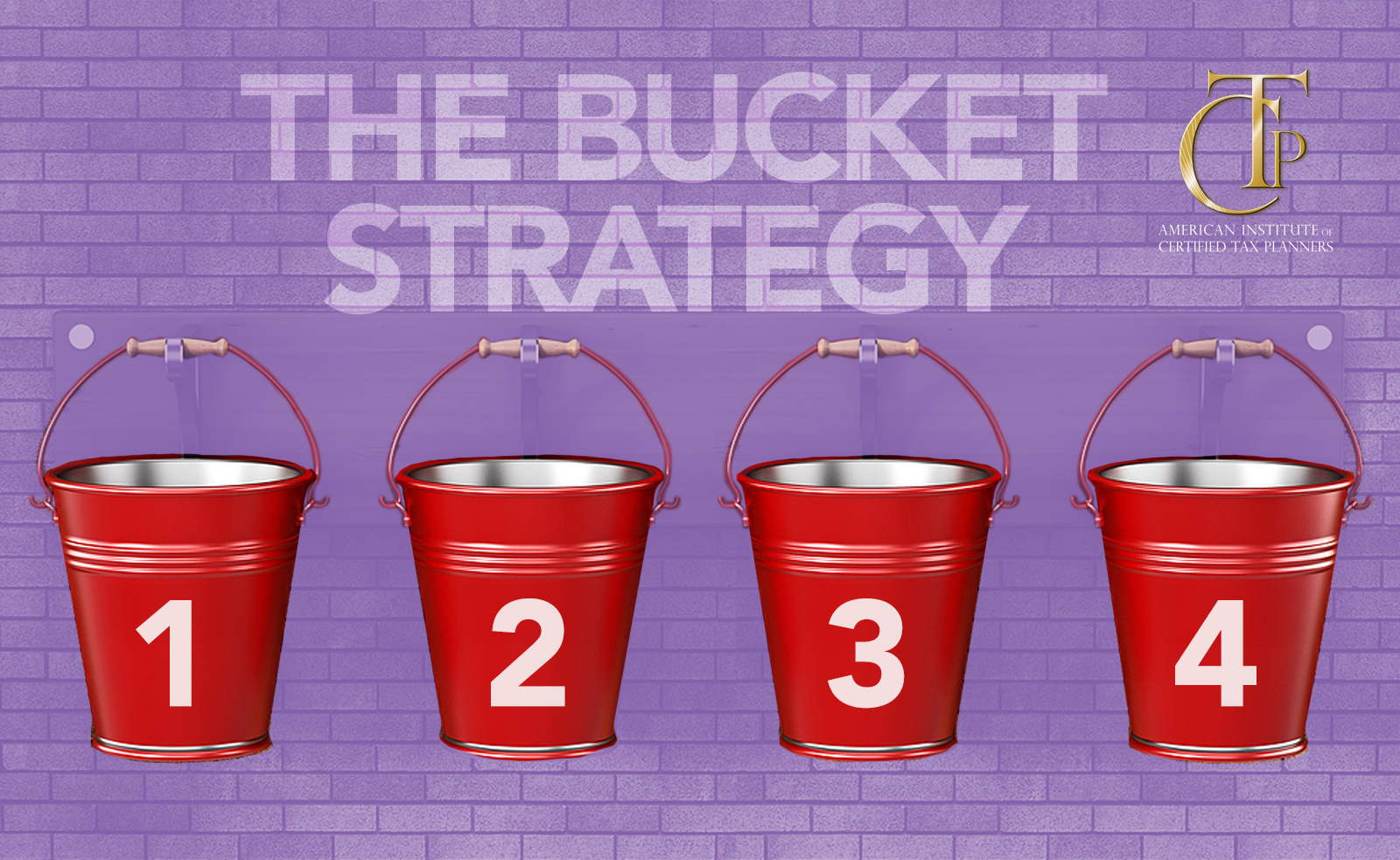As you begin working with taxpayers to plan out their cash flow for retirement, you will want to advise them on the timing for withdrawing those funds. This is where the “bucket strategy” comes into play. The bucket strategy looks at four basic types of retirement income:
- Taxable non-retirement investments (brokerage accounts)
- Pre-tax retirement funds
- Tax-free retirement funds
- Social Security payments
For taxable non-retirement investments or brokerage accounts, taxpayers will pay tax every year as their investments earn money, whether or not they actually withdraw funds from that account. They will need to be aware of the difference between short-term capital gains (taxed at ordinary income tax rates) versus long-term capital gains (taxed at lower capital gains tax rates). Holding onto an investment for more than a year can pay off by reducing overall taxes.
Pre-tax retirement accounts, on the other hand, take investment income that was originally tax-advantaged and convert it into cash, which is taxed at ordinary income tax rates. These accounts can be the reason a taxpayer’s tax rate spikes during retirement if they did not effectively plan for the tax deferrals.
The tax-free retirement account refers to the Roth IRA, which can be a key part of your tax strategy. Depending on the balance in a taxpayer’s IRA and brokerage accounts, they can make a withdrawal even if they don’t need the money and place it in a Roth IRA. This provides the benefit of compounding growth (just like the regular IRAs) without the pesky deferred taxes that hit you years down the road.
Lastly, taxpayers often forget that Social Security is a tax-advantaged source of retirement income. Benefits can be up to 85% taxable and can even be tax-free if you fall under the $34,000 income threshold. Many retirees may have years where their taxable income is that low, so planning in advance for that additional Social Security income can make a big difference.
Once you have a sense of where a taxpayer’s retirement assets are and how much income they need to sustain a year of retirement, the next step is to determine which “bucket” to withdraw from and when. At this point, the strategy for tax reduction is all about timing. You will want to factor in the taxpayer’s current tax rates and what their future tax rates may be. Consider any incoming legislation that may affect retirement income if your client plans to retire soon.
As far as sequencing goes, the most common advice is to tap into the pre-tax accounts first to avoid required minimum distributions (RMDs) and the potential of higher rates during retirement. However, as people are beginning to live longer and spend more years in retirement, some experts have suggested that it makes more sense to spend the brokerage accounts first and hold onto the IRAs for longer to benefit from that compounding growth. This can provide taxpayers with more overall income in the end.
A final strategy is to split annual withdrawals between the two types of accounts—half from the brokerage accounts and half from an IRA. Since, for example, they would be taking $50,000 out of your IRA every year instead of a full $100,000, they can end up in a lower tax bracket. This is because that second $50,000 taken from the brokerage accounts was already taxed in the year that they earned the money.
Remember that part of the strategy is to encourage taxpayers to begin planning for retirement as early as possible. If they wait until their 60s to begin managing tax brackets, this is often too late because there are not enough years left in the retirement timeline to reduce the taxable accounts and shift that tax bracket. However, if they begin the strategy earlier, they may be able to lock in a 22% tax bracket or lower, since they have more control over which buckets they are drawing from and when.
For ongoing training on the most timely strategies for retirement tax planning, register with us to become a Certified Tax Planner today.





